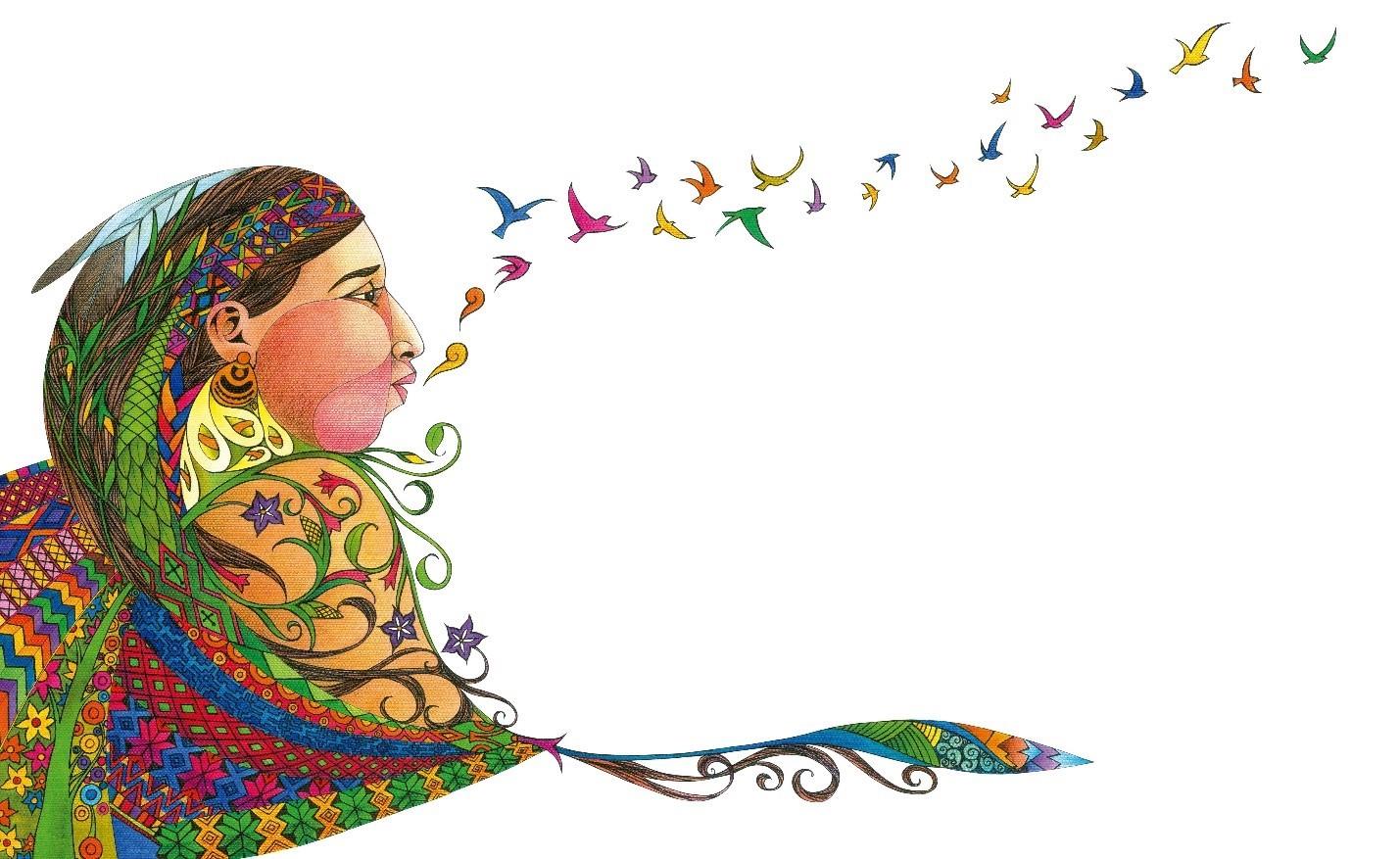Become co-author of Wiphala Book!

Picture © Chirapaq Peru
The White Paper on Indigenous Peoples’ collective rights
What is the White/ Wiphala Paper[1]?
In 2021, with the participation of representatives and organizations of Indigenous Peoples and scientific organizations from six socio-cultural regions from all around the world, the Global-Hub on Indigenous Peoples' Food Systems published the White/Wiphala Paper with an overview of Indigenous Peoples' food systems. The publication evaluates these systems from the point of view of their contribution to the development of sustainable food systems, the conservation of biodiversity, the mitigation of the negative effects of climate change, and the restoration of ecosystems.
The launch-pad
As the Secretary-General of the Pact of the Indigenous Peoples of Asia, Gam A. Shimra, recalls, the work on the creation of the Wiphala White Paper began on September 14, 2020, during a meeting with the Scientific Group of the UN Food Systems Summit, which was coordinated by the Global-Hub and the FAO Group on Indigenous Peoples. "I have paid great attention to the proposal of Professor Joachim von Braun, Chairman of the Scientific Group and Director of the Centre for Development Research (ZEF) of the University of Bonn, to create a book on Indigenous Peoples' food systems. Since thent, the journey to create the Wiphala White Paper has begun."
On 31 March 2021, Indigenous Peoples' leaders and research centres that belong to the Global-Hub held a joint event with the Scientific Group and presented, on this occasion, the White/ Wiphala Paper. The Scientific Group appreciated the work and offered to publish it on the website in the FAO technical publications section.
"We need to connect Indigenous Peoples' knowledge systems and scientific systems of universities and academies, and create a platform for knowledge exchange. Within the scientific group, we stand for a world in which much more needs to be done for the benefit of people, and the exchange of Indigenous Peoples' knowledge is closely intertwined with science," Professor von Braun believes. He called the publication of the Wiphala Book a starting point for continued cooperation with Indigenous Peoples and knowledge exchange.
"Whereas scientific knowledge is based on experiments, Indigenous Peoples' knowledge is based on long-term observations of the entire system. Scientific knowledge is less flexible, whereas Indigenous Peoples' knowledge is more flexible, since it provides a more holistic approach," Máximo Torero, Chief Economist of FAO, emphasized.
"We, the Indigenous Peoples, have come together to share our knowledge and views on the transformation of food systems into more sustainable systems for humanity. The UN Food Systems Summit is an important step taken by the international community to achieve the SDGs, and Indigenous Peoples can contribute to all five areas of the summit's activities," Anne Nuorgam, Chair of the United Nations Permanent Forum on Indigenous Issues (UNPFII), said.
“Indigenous Peoples, their food systems, their knowledge and practices have always been marginalized in the world of politics, and this paper will serve as a tool to fill that gap,” believes Ismahane Elouafi, FAO Chief Scientist.
Myrna Cunningham, Indigenous leader and member of the Steering Committee of the UN Food Systems Summit, adds, “Our food systems are based on traditional values – a sacred and caring relationship with Mother Earth. This sacred relationship with nature has led to the development of our values by Indigenous Peoples around the world – the pursuit of consensus, gender equality and the sharing of collective territory.”
Present day
This year, the Global-Hub is leading a collective effort to publish the Wiphala (White) Paper on Indigenous Peoples’ mobile livelihoods and their collective rights to territories, land, water, and natural resources.
Who can participate?
Taking into account the richest heritage, deep knowledge of natural and food systems, as well as expert potential, Indigenous Peoples representatives, both in their personal capacity and organizations of Indigenous Peoples of the Russian Federation, are invited to take part in this work – all of them can share their experience and contribute to the development of this document.
How to take part?
To participate in the work on the publication, you need to fill out a questionnaire (see there detailed instructions) in written text or prepare an audio answer and send it as an attachment through WhatsApp. You can fill out the questionnaire both on behalf of an organization of Indigenous Peoples, and individually. The authors of the publication, if necessary, are ready to maintain the anonymity of the contributors.
Audio questions are available here.
Please send your answers by 28th February 2023.
Whom to contact for any inquiries?
Varvara PARILOVA,
Indigenous Peoples Consultant, FAO Liaison Office with the Russian Federation
E-mail: [email protected]
Mobile phone: +7-924-868-51-74
BACKGROUND INFORMATION:
FAO pays great attention to the issues of the Indigenous Peoples around the world, who are the bearers of the historical memory and traditional knowledge of humanity, especially in such areas as agriculture and food production. Since 2014, a specialized unit on coordination of the Organization’s engagement with Indigenous Peoples has been functioning within the FAO Secretariat in Rome, and in 2020, the Global-Hub on Indigenous Peoples’ Food Systems was established as a subsidiary body of the FAO Committee on Agriculture. Since 2022, the topic of Indigenous Peoples has been highlighted as a separate area of work for the FAO Moscow Office.
[1] The Wiphala is a square emblem used as a flag to represent some of the Andean Indigenous Peoples (e.g. the Quechua) in the region that includes Bolivia, Peru, Chile, Ecuador, northwestern Argentina, and southern Colombia. Seven colours of the Wiphala are the same as in the rainbow, and its colours symbolize the following: red – the Earth and an inhabitant of the Andes; orange – society and culture; yellow – energy and strength; white – time and change; green – natural resources and wealth; blue – space; and purple – self-government and self-determination of the Andes.
